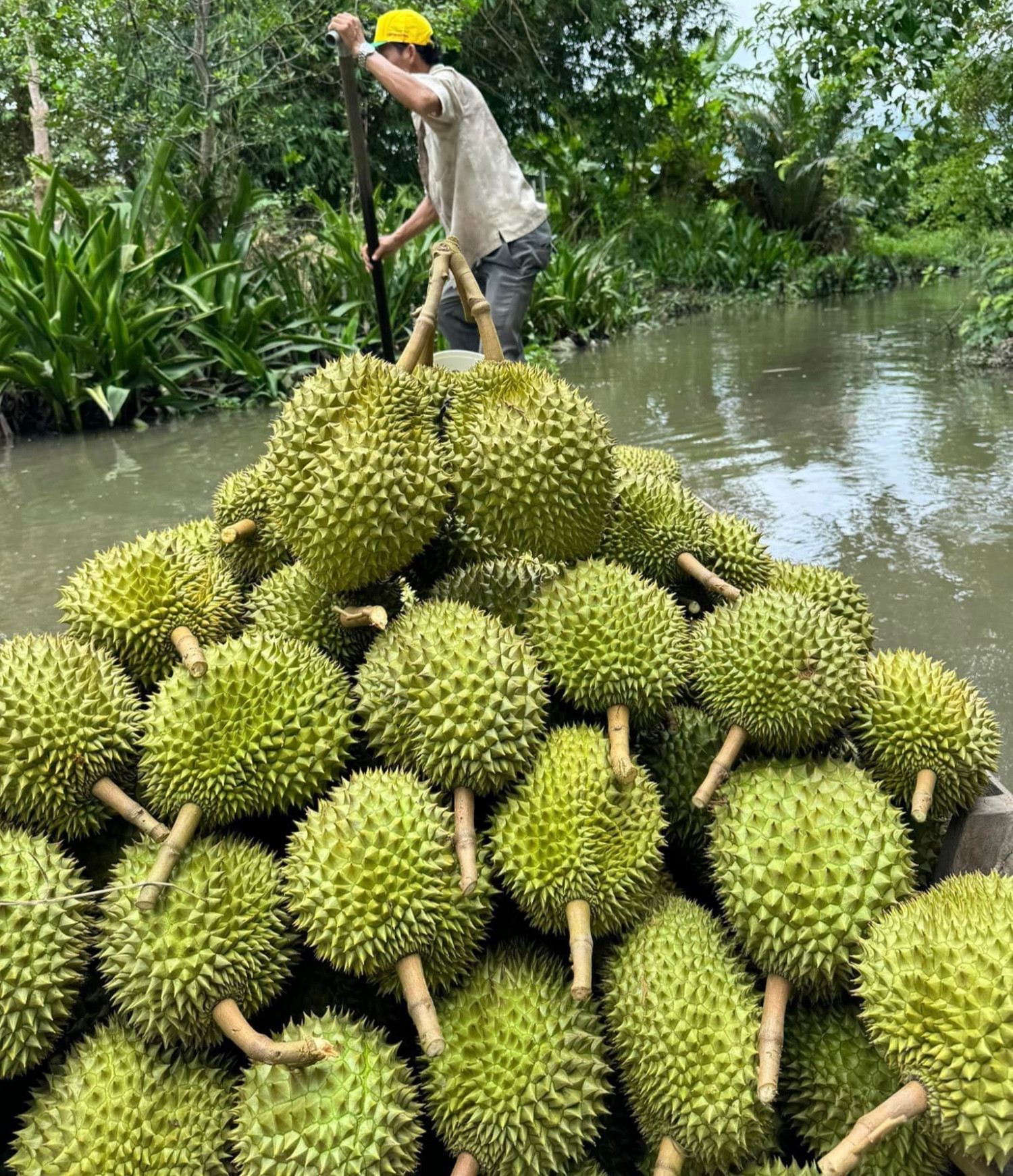Durian exports brought in approximately 16.85 trillion VND ($674 million) in just one month. Remarkably, the "king of fruits" is now in its off-season, a period when Vietnam is the sole global supplier, pushing prices to unprecedented highs.
According to data from the General Department of Customs, durian remains Vietnam's top fruit export, dominating the agricultural export sector. In the first nine months of 2024, durian generated $2.82 billion, a year-on-year increase of 63.3%, accounting for more than 50% of Vietnam’s total fruit and vegetable export turnover.
In September alone, durian exports reached nearly $674 million, a 24.9% increase compared to August.
China remains Vietnam’s largest market, accounting for over 90% of the export value of this billion-dollar fruit.
Dang Phuc Nguyen, General Secretary of the Vietnam Fruit and Vegetable Association, estimated that durian exports exceeded $3 billion by the end of October 2024. He noted that while the main harvest season in the Central Highlands has mostly concluded, the Mekong Delta is now entering its off-season harvest.
This off-season harvest period positions Vietnam as the sole supplier of fresh durian globally, particularly in the Chinese market. Additionally, the reduced yield of off-season durians in the Mekong Delta has caused prices to surge dramatically, explained the association's leadership.
As of October, the country had harvested approximately 1.1 million tons of durian, a 20% increase year-on-year, according to the Ministry of Agriculture and Rural Development. However, October’s harvest was only 154,200 tons, a 15% decrease compared to September.

In recent days, prices have soared due to supply shortages amidst increasing demand. Nguyen Nhat, a farmer in Dong Nai Province, reported that premium-grade Thai durians in Southeast Vietnam have approached 200,000 VND ($8) per kilogram, while Ri6 durians are being purchased at 150,000 VND ($6) per kilogram.
Huynh Tan Loc, Director of the Ngũ Hiep Durian Cooperative in Tien Giang Province, remarked: “Prices are so high that our cooperative hesitates to buy for export. This time last year, we were purchasing several dozen tons daily, but now it’s unaffordable.”
Loc added that grade-A Thai durians are now sold at 190,000-200,000 VND/kg, with grade-B selling about 20,000 VND lower. Similarly, grade-A Ri6 durians fetch 150,000 VND/kg at warehouses. At farms, durian prices range from 130,000-170,000 VND/kg for grade-A produce.
Adverse weather this year has reduced the fruit's yield, especially during the off-season, as flowers bloomed in abundance but had low fruit set rates. This scarcity has driven traders to scour farms, further escalating prices.
Off-season durian harvesting in Vietnam runs from October to February, a period when other durian-producing countries have already finished their harvests. This timing gives Vietnam a near-monopoly on the global fresh durian market. Vietnamese exporters are under contractual obligations to fulfill orders for Chinese partners, regardless of price, fueling the current price surge.
Loc also predicted further price increases as the Lunar New Year approaches, when durians are highly sought after as gifts in China. “Durian prices are rising as rapidly as gold,” he quipped. As a result, his cooperative is refraining from signing large export contracts to avoid the risk of price drops, opting instead for short-term deals.
Nguyen estimated that durian exports could reach $3.5 billion this year.
Frozen durian exports to China remain under development, with companies working to obtain plantation codes for export. The first shipments of frozen durians are expected by late 2024 or early 2025.
However, due to the high price of fresh durians, most companies prefer exporting whole fresh fruits. Freezing durian flesh becomes economically viable only when there is abundant supply at low prices, making it more competitive in the Chinese market.
Tam An